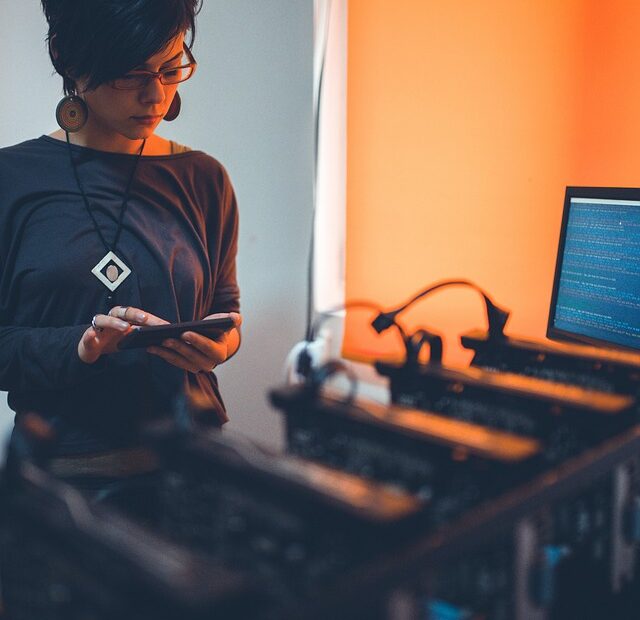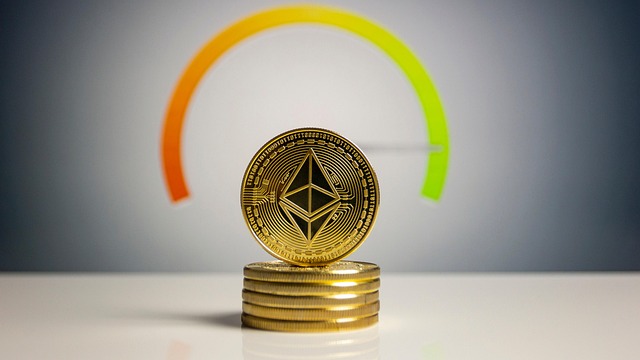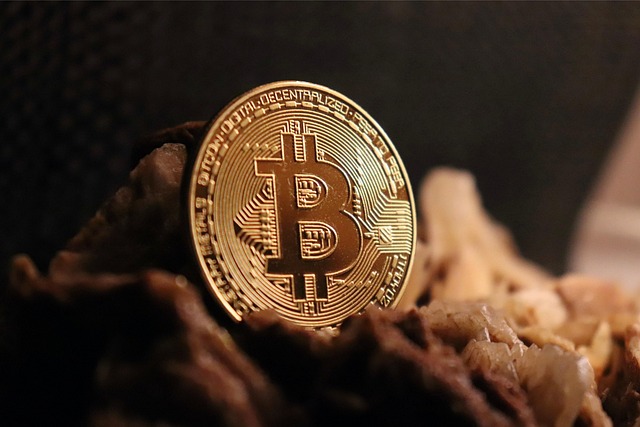Real estate not the best asset for RWA tokenization — Michael Sonnenshein
As more institutions explore blockchain-based finance, some industry leaders say tokenized real-world assets (RWAs) may surpass $30 trillion by the 2030s. Others are casting doubt on that projection.In June 2024, Standard Chartered Bank and Synpulse predicted that RWAs may reach over $30 trillion by 2034. The narrative remained strong in the latter part of 2024, with some analysts expressing similar sentiments. At Paris Blockchain Week 2025, a panel moderated by Cointelegraph’s managing editor, Gareth Jenkinson, brought together executives from across the tokenization ecosystem to discuss the future of RWAs. Participants included Charles Adkins of Hedera, Dotun Rominiyi from the London Stock Exchange, Shy Datika of INX, Steven Gaertner of Tiamonds and Securitize chief operating officer Michael Sonnenshein.While the majority supported the $30 trillion estimate, Sonnenshein expressed skepticism.The Truth Behind Tokenization and RWA panel. Source: Paris Blockchain WeekSecuritize exec predicts a more conservative trajectory for RWAsSonnenshein, a former CEO of Grayscale Investments, said tokenized assets may not reach the $30 trillion mark. He argued that there are many “good systems” in place that already work for traditional assets:“I have to just say, at the moment there obviously are some really good systems in place that allow some of these assets to trade. So, just because it can be tokenized doesn’t mean that it should be. And so, I’ll take the under on the $30 trillion number.”Despite being an outlier in his predictions, Sonnenshein said he’s still bullish on RWAs, adding that his sentiment “doesn’t mean that tokenization isn’t here to stay.” Sonnenshein said that the space will still see a major explosion of investors who will see their wallets as not just a place for crypto speculation but also a “place that actually houses investments of theirs the way their brokerage accounts or investment accounts would as well.”Related: BlackRock’s BUIDL expands to Solana as tokenized money market fund nears $2BTokenization doesn’t “translate well” to representing real estate ownershipSonnenshein also questioned the viability of real estate as a primary use case for RWAs.In the United Arab Emirates, government agencies have made moves to link tokenization with real estate. In January, local real estate developer Damac signed a $1 billion deal with RWA blockchain Mantra to tokenize real estate in the UAE. While some put their money on tokenized real estate, Sonnenshein cast doubt on the idea. “I’ll be the controversial one up here and just say I don’t think tokenization should have its eyes directly set on real estate,” he said during the panel. While the executive recognized the benefits of tokenizing real estate, he argued that this doesn’t translate well to representing ownership. “I’m sure there are all kinds of efficiencies that can be unlocked using blockchain technology to eliminate middlemen and escrow and all kinds of things in real estate. But I think today, what the onchain economy is demanding are more liquid assets,” he added. Magazine: New ‘MemeStrategy’ Bitcoin firm by 9GAG, jailed CEO’s $3.5M bonus: Asia Express
Builders beware! — The UK's 2026 crypto regime is coming
Opinion by: Katherine Kirkpatrick Bos, general counsel at StarkWareAs Washington takes a softer stance on crypto, regulators are counting down to even stricter regulations in the UK. The United Kingdom’s Financial Conduct Authority (FCA) is working on plans for a new “gateway” authorization regime by 2026, targeting a broader spectrum of crypto activities. It is easy to disregard this if you aren’t in the UK, but as frameworks are formed, regulators may look to other jurisdictions for lessons and inspiration. Crypto is global, and one of the challenges and opportunities is the need to pay careful attention to many jurisdictions at once.Bigger net than Anti-Money LaunderingFor some time, the FCA’s crypto focus was primarily on Anti-Money Laundering (AML) checks. Even that was no walk in the park — only around 14% of firms seeking mandatory registration have made the cut since 2020.The AML register was essentially a narrow lens; it was not a licensing or supervisory regime. Now, the FCA wants to go further. According to Matthew Long, the director of payments and digital assets at the FCA, by 2026, the regulator plans to regulate a broader range of crypto activities — possibly including stablecoin issuance, payment services, lending, exchanges, and more.Does that sound like a significant leap beyond AML? It is. Although AML or broader anti-fraud measures, as appropriate, are important things to consider for any centralized crypto company, a more sophisticated regulatory regime may offer opportunities or pitfalls depending on the sophistication of the company. And here’s the real kicker: The shape of these rules remains in flux, meaning that what’s “in scope” can still shift. What does this mean for builders? Anyone building layer 2 (L2) or other structures that could theoretically touch financial flows — like bridging or crosschain swaps — could find themselves in the crosshairs.Borderless implications”That’s the UK; I’m in the US (or Singapore, or Cayman, somewhere else).” Just as the FCA looks at international models to inform its path forward, these frameworks have a knack for going global. Consider how quickly ideas around data protection spread after the European Union’s General Data Protection Regulation (GDPR) proliferated. Crypto is similarly borderless.Recent: UK trade bodies ask government to make crypto a ‘strategic priority’If the UK crafts a robust enough regime, other jurisdictions could borrow from it. If a business serve users outside its home turf, its user base is global, so ignoring the UK’s rules won’t be justifiable. Take stablecoins: If the FCA mandates strict reserve disclosures or near-real-time audits, stablecoin issuers may need to apply those standards across the board. Uniformity is easier than fragmentation, and that’s how local UK rules become the de facto global baseline.No more snooze button for buildersDeveloper teams may see these headlines and assume: “Custodians, fiat on-ramps — that’s not me; I just deploy contracts.” Tempting but short-sighted. Many apps now host lending pools, stablecoin liquidity, and staking services. Those are precisely the kinds of activities regulators might categorize as “payment services” or “lending.” If a protocol is a key piece of that puzzle, it may be in line for questions from regulators. FCA may not knock on your door tomorrow, but builders should be consider:Control and custody: If an infra manages users’ funds — even briefly — that could be considered “custodial,” then that risk should be factored into the overall product design.Payment-like functionality: Depending on the overall architecture and centralization, a license may be required, if a DApp mimics or facilitates payments, stable transfers, or lending.Geographic scope: You may not have a UK entity but consider your user base. Does your front end target UK customers? If yes, you can’t just opt out of the rules. We cannot forget the FCA’s stringent marketing rules for crypto, introduced in 2023.The compliance silver lining We always talk about regulation like it’s a four-letter word, but building with regulation – either current or future – in mind, can give you a head start. Teams that develop features like appropriate and rigorous geofencing, Know Your Customer (KYC) plug-ins, or risk analytics stand to gain if key markets insist on specific layers of user protection. If you’re creating an app, L2, bridging service, or other protocol, offering optional compliance toggles can be a competitive advantage. Consider telling institutional partners you’ve already built the necessary guardrails. Yes, it’s extra effort, and you must balance community optics, mission, UX, and other primary product considerations. Still, it also means you won’t need to scramble to retrofit everything when the final rulebook lands.Frantic code rewrites are no fun. If you know the rules might change, it is better to build a flexible architecture now.Convergence or patchwork?Here’s the big question: Will we see global convergence or a messy patchwork of contradictory rules?The FCA has hinted at coordination with other bodies (like the International Organization of Securities Commissions, or IOSCO) and is watching the law that instituted uniform EU rules for crypto, Markets in Crypto-Assets Regulation (MiCA) across the EU. That suggests some appetite for alignment. A “worst-case scenario” is a total balkanization that forces developers to run region-specific versions of their apps or builders to leverage confusing and inefficient jurisdictional arbitrage. The implications will be felt throughout crypto, especially for smaller teams that can’t afford to code half a dozen separate compliance modules. We can’t say yet which outcome is more likely. Still, we can be sure larger economies (including the EU) will continue to progressively shape the crypto legal environment they deem fit for their purposes. And yes, they’ll undoubtedly swap notes on what seems to work (and what doesn’t).Don’t wait for 2026Whether or not this new impending gateway regime directly affects devs, it’s a wake-up call that purely permissionless, unregulated innovation might give way to a more structured future where oversight rules. If 14% AML approval rates were onerous, imagine how difficult it would get when regulators expand into stablecoins, payment services, crypto lending, and beyond.The upside is that crypto has grown enough to command the attention of the highest levels of TradFi. That growth is being used to fuel mainstream adoption, which is excellent for builders serious about the space and their goals. If you want to be a part of that future, don’t ignore the FCA’s plans and the broader regulatory development globally.Watch the consultations, read the draft proposals, and open lines of communication with qualified counsel. By the time 2026 arrives you’ll be a step ahead of the curve and not blindsided. The message is clear: Build preemptively, not retrospectively. Be proactive, not reactive.Opinion by: Katherine Kirkpatrick Bos, general counsel at StarkWare. This article is for general information purposes and is not intended to be and should not be taken as legal or investment advice. The views, thoughts, and opinions expressed here are the author’s alone and do not necessarily reflect or represent the views and opinions of Cointelegraph.
AI agent platform Virtuals revenue plunges to $500 a day with token down 90%
The artificial intelligence agent creation and monetization platform Virtuals Protocol has seen its daily revenue plummet to just $500 as demand for crypto AI agents continues to wane.“Probably one of the wildest crypto charts of the cycle,” Blockworks researcher Sharples said in an April 8 X post.Steep decline in AI agent creationSharples said that it has “been about a week” since a new AI agent launched on Virtuals compared to late November when the platform was helping make over 1,000 new AI agents a day, according to Dune Analytics data.On Jan. 2, the Virtual Protocol (VIRTUALS) token hit an all-time high of $4.61, Blockworks data shows Virtuals’ daily revenue soared above $500,000. However, that seemed to mark the start of a downtrend, signaling a potential top for the AI agent sector. The decline continued even after a Jan. 25 announcement that the project had expanded to Solana.On April 7, Sharples pointed out that Virtuals generated “less than $500” in daily revenue, with its token price falling as low as $0.42. Virtuals Protocol’s AI agents have generated a total lifetime revenue of $39.1 million. Source: Dune AnalyticsThe total AI agent market cap is $153.81 million, according to Dune Analytics. However, $76.6 million of that portion is allocated to AIXBT, which analyzes crypto sentiment on the social media site X to pick up on trends.AIXBT has dropped 92% since reaching its all-time high of $0.90 on Jan. 16. As of publication, it is trading at $0.07, according to CoinMarketCap data.DeGen Capital core contributor Mardo said the current market conditions have played a role in Virtuals’ decline, but it could also be tied to terms Virtuals has with builders, such as “withholding token taxes that other platforms freely give back.” It comes on the backdrop of the entire crypto market experiencing a downturn alongside global financial markets, as US President Donald Trump continues to ramp up tariffs and fears grow that it may lead to a recession.AI agents in current form are “garbage”However, many criticized AI agents for their lack of functionality. AI commentator, BitDuke said of the Virtual’s revenue decline, “ChatGPT wrappers are no longer interesting, who could have guessed.”Related: Not every AI agent needs its own cryptocurrency: CZAI commentator “DHH,” said in an April 8 X post, “I’m as AI positive as the next guy, but you’re delusional if you think any AI agent is full-on replacing a great programmer today. Who knows about tomorrow, but that day hasn’t arrived yet.”Meanwhile, Infinex founder Kain Warwick recently told Magazine that AI may possibly have a comeback despite the “first version of AI slop agents” being “garbage.”Magazine: Bitcoin heading to $70K soon? Crypto baller funds SpaceX flight: Hodler’s Digest, March 30 – April 5This article does not contain investment advice or recommendations. Every investment and trading move involves risk, and readers should conduct their own research when making a decision.
Trump tariffs could lower Bitcoin miner prices outside US, says mining exec
The Trump administration’s sweeping tariffs could collapse US demand for Bitcoin mining rigs, which would benefit mining operations outside the country as manufacturers will look outside the US to sell their surplus inventory for cheaper, says Hashlabs Mining CEO Jaran Mellerud.“As machine prices rise in the U.S., they could paradoxically decrease in the rest of the world,” Mellerud said in an April 8 report. “The demand for shipping machines to the U.S. is set to plummet, likely nearing zero.”“Manufacturers will be left with excess stock originally intended for the US market. To offload this surplus, they’ll likely need to lower prices to attract buyers in other regions,” he added.Falling mining rig prices could see non-US mining operations scale up and take a larger slice of Bitcoin’s total hashrate, Mellerud said.Source: Jaran MellerudUS President Donald Trump unveiled his administration’s “reciprocal tariffs” on nearly every country on April 2. Some of the largest crypto mining machine makers are based in countries hardest hit by the tariffs, including Thailand, Indonesia and Malaysia, which saw tariffs of 36%, 32% and 24%, respectively.Crypto mining rig makers Bitmain, MicroBT and Canaan moved to some of these countries to circumvent a 25% tariff that Trump imposed on China in 2018 during his last administration.Annual change in US tariffs on China, Indonesia, Malaysia and Thailand since 2017. Source: Hashlabs MiningMellerud noted that Trump’s latest tariffs would mean a mining rig that initially costs $1,000 would be priced at $1,240 in the US.“Meanwhile, in Finland and most other countries, there are no tariffs, so the cost of a $1,000 machine remains unchanged.”“In an industry as cost-sensitive as Bitcoin mining, a 22% price increase on machines can make operations financially unsustainable,” he added.No coming back from Trump’s tariffs — ‘Damage is done’Mellerud believes a future reversal of the Trump administration’s tariffs wouldn’t restore US crypto mining operators’ confidence.“Even if these tariffs are rolled back within a few months, the damage is done — confidence in long-term planning has been shaken,” Mellerud said. “Few will feel comfortable making major investments when critical variables can change overnight.”He said US miners felt reassured when Trump returned to the White House, expecting a more stable regulatory environment. Related: Bitcoin hashrate tops 1 Zetahash in historic first, trackers show“But they are now experiencing the flip side of his unpredictable policy shifts,” Mellerud said.The US accounts for nearly 40% of the network’s hashrate. Mellerud said there’s no reason for US miners to unplug their machines and doesn’t expect the total Bitcoin hashrate coming from the US to drop.However, the path to expansion is now “steep and uncertain,” he said, and as a result, the US could lose a considerable share of hashrate. Trump’s tariffs have shaken up almost every market, including the crypto markets and Bitcoin (BTC), which is down 4% over the last 24 hours to $76,470, CoinGecko data shows.Bitcoin is now 30% off the $108,786 all-time high it set on Jan. 20 — the same day that Trump re-entered the White House.Magazine: Crypto fans are obsessed with longevity and biohacking: Here’s why
Ethereum price data highlights $1,000 as the final bottom for ETH
Ether (ETH), the native token of Ethereum, is showing signs of bullish exhaustion after a steep 65% decline over the past three months. The pace of the downtrend and the oversold conditions shown by various ETH price metrics have investors wondering if a market bottom is approaching.ETH fractals point to a drop to $1,000Ether’s current price action mirrors a familiar fractal pattern seen in 2018 and 2022. In both instances, ETH price saw euphoric rallies that ended with sharp breakdowns and prolonged bear markets.Each of these cycles shared the following key traits:Higher price highs were accompanied by lower highs in the relative strength index, which is a classic sign of bearish divergence and weakening momentum.ETH/USD weekly price chart. Source: TradingViewAfter the price peak (cycle tops in the chart above), ETH retraced heavily, often falling through key Fibonacci levels.Cycle bottoms typically formed once the RSI dipped into oversold territory (below 30), with price stabilizing near historical Fibonacci zones.The current setup resembles this structure. In December 2024, Ether formed a higher high near $4,095, while the RSI made a lower high—mirroring the bearish divergence seen in previous tops. This divergence marked the beginning of a sharp correction, much like the patterns seen in 2018 and 2022. Currently, ETH’s price has closed below the 1.0 Fibonacci retracement level at around $1,550. Meanwhile, its weekly RSI is still above the oversold threshold of 30, suggesting room for further declines, at least until the reading drops below 30.ETH/USD weekly RSI performance chart. Source: TradingViewThe fractal suggests Ethereum could be in the final leg of its decline, with the next potential price targets inside the $990 – $1,240 price range, aligning with the 0.618-0.786 Fibonacci retracement area.Source: Mike McGloneRelated: 3 reasons Ethereum could turn a corner: Kain Warwick, X Hall of FlameEthereum NUPL falls into ‘capitulation’ — Another bottom indicatorEthereum’s Net Unrealized Profit/Loss (NUPL) has entered the “capitulation” zone—an onchain phase where most investors are holding ETH at a loss. In previous cycles, similar moves into this zone occurred close to major market bottoms.Ethereum NUPL vs. price chart. Source: GlassnodeIn March 2020, the NUPL turned negative just before ETH rebounded sharply following the COVID-19 market crash. A similar pattern emerged in June 2022, when the metric fell into capitulation territory shortly before Ethereum established a bear market low of around $880.Now that ETH is once again entering this zone, the current setup loosely echoes those prior bottoming phases—coinciding with key Fibonacci support levels near $1,000.This article does not contain investment advice or recommendations. Every investment and trading move involves risk, and readers should conduct their own research when making a decision.
Cboe set to launch new FTSE Bitcoin futures product in April
The Chicago Board Options Exchange (Cboe) has announced the launch of a new Bitcoin futures derivative product.According to an April 7 announcement, Cboe plans to launch the FTSE Bitcoin Index futures on April 28, which is based on the VanEck Bitcoin Strategy ETF (XBTF), if approved by regulators.The new product will be cash-settled, and like XBTF, it will represent one-tenth of the value of the FTSE Bitcoin Index. The futures will settle on the last business day of each month.This is the first product that was launched as a result of Cboe’s collaboration with the London Stock Exchange Group’s index subsidiary, FTSE Russell. The new Bitcoin derivative product is reportedly meant to complement its recently launched Bitcoin options offerings Bitcoin US ETF Index Options (CBTX) and Bitcoin US ETF Index Options (MBTX). Catherine Clay, global head of derivatives at Cboe, said:“This launch comes at a pivotal time as demand for crypto exposure continues to grow and market participants are increasingly seeking more capital-efficient and versatile ways to gain and manage that exposure.”Related: Largest ever CME gap has just printed in Bitcoin futuresCboe continues crypto product developmentCboe is a major player in the worldwide financial landscape and a historic institution founded in 1973. The exchange is also a provider of Bitcoin (BTC) products, having launched its first Bitcoin futures contracts on Dec. 10, 2017.Now, Cboe continues to innovate the traditional markets that appear so glacial in their evolution to crypto natives. In early February, the exchange further shrank the gap between crypto and traditional finance by announcing plans to roll out a 24-hour trading day — but only on weekdays.Related: Cboe files amended applications to list Bitcoin, Ethereum options in USBitcoin futures are not a thing of the pastDespite the introduction of Bitcoin exchange-traded funds (ETFs), Bitcoin futures are still widely traded and discussed among crypto market participants. In late March, Bitcoin futures leveraging led to a $10 billion open interest wipeout.Product development is also still ongoing in the segment. In March, Coinbase announced that it plans to offer 24/7 trading for Bitcoin and Ether futures to US residents.Also in March, Singapore Exchange (SGX), the largest exchange group in Singapore, was reported to plan to debut Bitcoin perpetual futures in the second half of 2025.Magazine: Bitcoin heading to $70K soon? Crypto baller funds SpaceX flight: Hodler’s Digest, March 30 – April 5
How to use ChatGPT to turn crypto news into trade signals
Key takeawaysChatGPT can analyze crypto news headlines and generate actionable trade signals, helping traders make faster and more informed decisions.Well-crafted prompts are essential — the more specific your instructions, the more accurate and useful ChatGPT’s responses will be.News-based signals work best when combined with broader market context, like Bitcoin trends or altcoin momentum, for a complete trading picture.AI is a tool, not a guarantee — always verify its insights with other research, charts and risk management practices before executing trades.The cryptocurrency market moves fast, and staying ahead of the curve can feel overwhelming — especially for beginners. News plays a huge role in driving crypto prices, but how do you sift through the noise and turn it into actionable trade signals? Enter ChatGPT, a powerful AI tool that can help you analyze crypto news and spot opportunities. This guide will walk you through how to use ChatGPT (or similar AI tools like Grok) to transform crypto news into trade signals, step by step.However, note that the examples used in this article are simplified and brief, intended purely for illustration purposes — executing AI-generated crypto trades in the real world requires deeper analysis, broader data inputs and thorough risk management.What are trade signals?Before you dive in, let’s clarify what a trade signal is. A trade signal is a suggestion to buy or sell a cryptocurrency based on specific information — like price trends, market sentiment or breaking news. For example, if a coin’s price drops due to increased supply, it might be a “buy” signal if you think it’s undervalued — or a “sell” if you expect it to fall further. The goal here is to use ChatGPT to help you identify these signals from the news.Now, let’s dive into how you can use ChatGPT to turn crypto news into potential trade signals.Step 1: Gather crypto newsTo get started, you need some crypto news to analyze. Here’s how to find it:Websites: Check crypto media websites of your choice.Social media: Platforms like X are goldmines for real-time crypto updates — search hashtags like #Bitcoin, #Ethereum, #CryptoNews or any specific project you’re tracking.News aggregators: Use tools like Google News or Feedly with keywords like “cryptocurrency” or “blockchain.”For example, let’s say you find this headline:“Pi Network price nears all-time lows as supply pressure mounts.”Step 2: Open ChatGPTIf you’re using ChatGPT, head to the OpenAI website and log in. Then, type your questions or prompts into the chat interface.Step 3: Craft a simple promptA “prompt” is just a clear instruction you give the AI. For beginners, keep it simple and specific. Tell ChatGPT what news you have and what you want it to do. Below is an example based on the above-selected headline:Prompt and ChatGPT’s responsePrompt: “I read this news: ‘Pi Network price nears all-time lows as supply pressure mounts.’ Can you analyze this and tell me if it’s a buy or sell signal for Pi Network? Explain why (in brief).”The image below shows a ChatGPT 4o response analyzing this piece of news. It suggests a sell signal, citing the 126.6 million PI token unlock (1.87% supply increase) as a bearish factor likely to push the $0.65 price lower due to weak demand. Limited exchange listings (e.g., not on Binance) and bearish technicals like the relative strength index (RSI) in oversold territory reinforce this. However, buy confidence is noted for long-term investors, as the all-time low might indicate an oversold condition, hinting at a potential rebound. It also advises caution and further research.Step 4: Ask follow-up questionsThe first response might not cover everything, as seen above. Dig deeper with follow-ups like:Follow-up prompt 1: “Are there risks to buying Pi Network at its all-time low? Organize your answer in brief points.”The ChatGPT 4o response to the follow-up prompt No. 1 lists the risks of buying Pi Network at its all-time low ($0.65), as shown in the above image. It highlights token unlocks increasing supply and downward pressure, ongoing bearish momentum with no reversal signs, low liquidity due to absence from major exchanges like Binance, limited real-world utility and adoption, a centralized structure raising concerns, and speculative nature, as success hinges on uncertain future developments. This reinforces a cautious approach.Follow-up prompt 2: “What happened to Pi Network’s price in the past when supply increased? Organize your response in brief points.”ChatGPT 4o’s response to follow-up prompt No. 2 explains that token unlocks, like mining rewards, increase supply, often causing sharp price drops. For instance, the April 2025 unlock of 126.6 million PI tokens led to a 77% decline from February highs as demand lagged. This recurring pattern of price falls due to oversupply reinforces the bearish signal for Pi Network.Step 5: Combine news with market contextNews doesn’t exist in a vacuum. You could ask ChatGPT to factor in broader market trends. For example:Prompt:“Given this Pi Network news, how should I trade if Bitcoin is booming? Keep your answer brief.”ChatGPT 4o’s response to the above prompt advises against buying Pi Network (PI) despite Bitcoin’s (BTC) rise. It suggests avoiding PI due to its weak momentum and oversupply, recommending a focus on stronger assets like Bitcoin or altcoins benefiting from the market uptrend. It also advises waiting for PI demand or exchange listings to improve and using stop-losses if attempting to buy the dip, emphasizing capital protection.Step 6: Test and refineAI isn’t perfect — it’s a tool, not a crystal ball. Test its suggestions with small trades or paper trading (simulated trades without real money). Over time, tweak your prompts to get better results. For example:“Analyze this news — “Pi Network price nears all-time lows as supply pressure mounts” — and give me a buy/sell signal with a confidence score.”Caution: Limitations to be aware ofThe example in this article is based on one news headline and a few prompts. In the real world, successful trading requires analyzing multiple news sources, market trends and technical indicators. Relying on a single news item or prompt can lead to incomplete insights, so always cross-check and diversify your research.Did you know? In 2024, cryptocurrency scams generated a record-breaking $12.4 billion, with over 83% of the fraud tied to high-yield investment schemes and AI-driven “pig butchering” scams, according to Chainalysis — highlighting how artificial intelligence is now fueling the next wave of crypto crime.Risks of using ChatGPT-powered crypto trading insightsCrypto trading with AI bots and tools like ChatGPT can be powerful, but it’s not without risks. Understanding these pitfalls can help you trade more safely.Market volatility: Crypto prices can swing wildly, and bots may not react well to sudden crashes or pumps.Overreliance on AI: ChatGPT’s signals are based on its interpretation of news, which might miss broader market trends or technical factors.Technical issues: Bot platforms can face downtime, bugs or API connection errors, potentially leading to missed trades or losses.Limited news scope: Relying solely on one news headline (like the Pi Network example) could lead to incomplete analysis.Security risks: If API keys are compromised, your funds could be at risk. Always enable two-factor authentication (2FA) on your exchange.Tips for successA few best practices can help you get the most out of ChatGPT-powered trading insights while minimizing risks.Be specific: Vague prompts like “What’s a good trade?” won’t help. Include the news and crypto you’re focused on.Cross-check: Use ChatGPT’s analysis as a starting point, then verify with price charts or other traders’ opinions on X.Stay updated: Crypto moves fast. Feed the AI the latest news for fresh signals.Manage risk: Never trade more than you can afford to lose — AI can guide you, but it’s not foolproof.Start small: Test your bot with a small amount of capital to understand how it performs with ChatGPT’s signals.Diversify signals: Use ChatGPT to analyze multiple news sources, not just one, for a well-rounded strategy.Set stop-losses: Protect your funds by setting stop-loss limits to cap potential losses.Stay informed: Regularly check market trends and news to ensure ChatGPT’s signals align with the bigger picture.Ready to try a new headline?Now that you’ve seen how to turn crypto news into trade signals using ChatGPT, it’s time to put it into action! Pick a fresh headline and follow the steps above.With practice, you’ll get better at spotting opportunities and making informed trades. However, keep in mind that ChatGPT is not a financial adviser — always assess your own risk tolerance before acting on AI-generated insights.Safe trading!
Panicked Bitcoiner mistakenly pays over $70K of BTC in fees
One presumably panicked Bitcoin user paid nearly 0.75 BTC ($70,500) in a replace-by-fee (RBF) transaction fee.The transaction in question was sent about 30 minutes after midnight UTC on April 8. It was the second attempt at performing an RBF that changed the transaction’s target address, sending 0.48 Bitcoin ($37,770) with 0.2 BTC of change ($16,357).Second Bitcoin RBF transaction. Source: Mempool.SpaceAnmol Jain, vice president of investigations at crypto forensics firm AMLBot, told Cointelegraph that the original transaction featured a “default or conservative” fee. The first RBF raised the fee to nearly double the amount and changed the output address.Both of those transactions are waiting for a confirmation that will never come. This is because the much higher fee RBF transaction took its place with the same output as the second RBF transaction — presumably, an attempt to bump the fee to ensure that the RBF is processed rather than the original transaction.Related: How to fix a stuck Bitcoin transaction in 2025: A step-by-step guideA presumed panic-induced errorThe transaction has signs of a panic-induced error, with the user sending a subsequent transaction fast to prevent the original transaction from being included in a block and becoming final. Jain suggested some potential explanations:“Maybe he meant to use 30.5692 sat but, due to haste or butter fingers, ended up using 305,692 sat.“The second RBF transaction also added an additional input unspent transaction output (UTXO). This UTXO contained nearly 0.75 Bitcoin (BTC). The change was mistakenly included as part of the fee, likely because the user failed to update the change address or misjudged the transaction’s structure.Another possibility raised by Jain is that the user got confused between a fee in absolute terms and one set in satoshi per virtual byte (transaction size) or that the automated script behind the transaction contained a bug. The wallet could allow setting a fee in satoshis, which could lead to a scenario where the fee is set way too low, a warning about the low fee and an overcorrection:“System reads it as 30 sats total fee, which is way too low, so user types 305000 thinking it means 30.5 sat/vB, and the wallet actually applies 305,000 sats/vB, which is insane.“Related: Bitcoin user pays $3.1M transaction fee for 139 BTC transferReplace-by-fee: a controversial featureRBF is a widely misunderstood and controversial feature of Bitcoin. Bitcoin transactions are considered non-final until they are included in a block, with further confirmation by more blocks in the same chain.Transactions in the mempool are at the mercy of miners — who are expected to be profit-driven. Bitcoin developers foresaw that with multiple conflicting Bitcoin transactions, the financial incentive would be to process the one paying the higher fee.There is no easy way to prevent Bitcoin miners from simply including the transaction that was sent first, and it is also not straightforward to establish which transaction was submitted first due to the decentralized nature of the network. Consequently, this incentive was recognized in the RBF feature, allowing users to edit unconfirmed transactions by submitting an alternative transaction with a higher fee.This led to some controversies in the past, with Bitcoin Cash (BCH) proponent Hayden Otto claiming that RBFs allowed for Bitcoin double-spends back in 2019. In contrast, Bitcoin Cash has removed the feature and claimed that unconfirmed transactions sent on that network are final and secure to accept.Still, with the way blockchains function, RBF-like transactions were confirmed to occasionally occur on Bitcoin Cash either way. This is because RBF is just an implied property of a Bitcoin-like consensus mechanism that was formalized as a feature.Magazine: I became an Ordinals RBF sniper to get rich… but I lost most of my Bitcoin
US to get its first XRP-based ETF, launching on NYSE Arca
Asset manager Teucrium Investment Advisors is set to launch the first XRP-based exchange-traded fund in the US markets, a leveraged XRP (ETF) on the NYSE Arca.The Teucrium 2x Long Daily XRP ETF will seek to offer investors two times the daily return of the XRP (XRP) token with a 1.85% management fee and annual expense ratio, according to the company’s website. The XRP-based ETF will trade under the XXRP ticker beginning April 8.”If you have a short-term high-conviction view on XRP prices, you may consider exploring the Teucrium 2x Long Daily XRP ETF,” the alternative asset manager said.XXRP currently has $2 million worth of net assets.Details of Teucrium’s soon-to-be-launched XXRP ETF. Source: TeucriumTeucrium founder and CEO Sal Gilbertie told Bloomberg on April 7 that investors had shown strong interest in an XRP ETF and hinted that it may file to list more crypto ETFs in the future.Gilbertie was also pleased that XXRP would launch during a market downturn driven largely by US President Donald Trump’s tariffs.“What better time to launch a product than when prices are low?” Gilbertie told Bloomberg.Likelihood of an approved spot XRP ETF still high: AnalystBloomberg ETF analyst Eric Balchunas said it was “very odd” to see a new asset’s first ETF come in leveraged form — however, he added that the odds of a spot XRP ETF being approved remain “pretty high.”Source: Eric BalchunasSeveral spot XRP ETF applications from the likes of Grayscale, Bitwise, Franklin Templeton, Canary Capital and 21Shares are being reviewed by the Securities and Exchange Commission.In February, Balchunas and fellow Bloomberg ETF analyst James Seyffart attributed 65% approval odds to a spot XRP ETF in 2025.Predictions market Polymarket states there is currently a 75% chance that the SEC will approve a spot XRP ETF in 2025.Related: XRP price sell-off set to accelerate in April as inverse cup and handle hints at 25% declineUp until recently, ETF issuers would have seen a different environment for filing for XRP ETFs as Ripple Labs — the creators of the XRP token — and the SEC battled out a four-year court battle over XRP’s security status.That case came to a close last month.Teucrium has amassed over $310 million worth of assets under management since it was founded in 2010.It offers mostly agricultural commodities, such as ETFs tracking the likes of corn, soybeans, sugar and wheat.Magazine: XRP win leaves Ripple and industry with no crypto legal precedent set
Lawyer sues US homeland dept to probe supposed Satoshi Nakamoto meeting
A crypto lawyer has sued the US Department of Homeland Security, alleging the agency may know who created Bitcoin — compelling the department to share what it knows. The Freedom of Information Act lawsuit was filed by James Murphy, who based his accusations on claims made by DHS Special Agent Rana Saoud at a conference in April 2019, where she said a few of her colleagues had previously met with four people involved in creating Bitcoin.“My FOIA lawsuit simply asks for the notes, email and other documents relating to that alleged interview,” Murphy posted to X after announcing the April 7 suit. “IF the interview really happened as the DHS Agent claimed, there should be documentation of the substance of that meeting,” added Murphy, who goes by MetaLawMan on X.Source: James MurphySpeaking at the OffshoreAlert Conference North America in Miami in April 2019, Saoud said DHS agents met with the four people it believed to have created Bitcoin, asking what their motives were and what the “end game” is for Bitcoin.“The agents flew to California and they realized that he wasn’t alone in creating this, there were three other people, they sat down and talked with them to find out how this actually works and what the reason for it was,” Saoud said in the presentation, which is available on YouTube.If the DHS resists disclosure, Murphy said he will “pursue the case to conclusion” to solve the mystery.Murphy, however, noted that it is possible that Saoud and the other DHS agents were mistaken and did not interview the real Satoshi Nakamoto. Related: Satoshi Nakamoto turns 50 as Bitcoin becomes US reserve assetMurphy is being assisted by former Assistant US Attorney Brian Field, who specializes in Freedom of Information Act litigation.The purpose of the Freedom of Information Act is to promote transparency and accountability by granting the public access to information held by the government.Efforts to identify Satoshi Nakamoto have failedThe lawsuit follows a wave of recent efforts attempting to uncover Satoshi’s identity.Last October, a controversial HBO documentary claimed that Peter Todd, a Bitcoin cypherpunk, invented Bitcoin. Todd refuted that conclusion, and most industry pundits said HBO’s evidence was weak.Nick Szabo, Adam Back and Hal Finney have also had their names tied to Satoshi’s identity. Szabo and Back regularly refute claims they’re Satoshi, as did Finney before he died in 2013.Meanwhile, members of the Bitcoin community are split on whether unveiling Satoshi’s identity would be a net positive for Bitcoin.Some worry that revealing Satoshi’s identity could compromise Bitcoin’s decentralized ethos and put Satoshi’s safety at risk, while others want to be reassured that Bitcoin wasn’t created by the US government.Magazine: 10 crypto theories that missed as badly as ‘Peter Todd is Satoshi’










